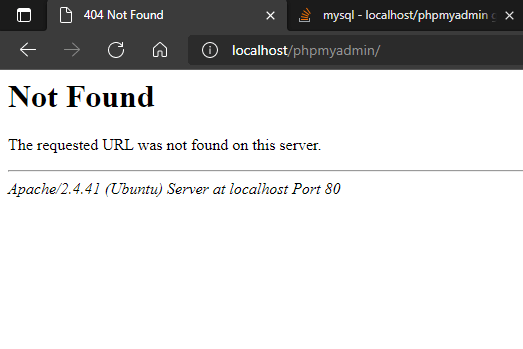

If you get an error “Access denied for user you should continue to Step 3 to create a superuser just for phpMyAdmin. However, remote login might be disabled for root.

You will have set up the root user and password when installing MySQL for the first time. If you don’t have a domain name yet or don’t know your IP, you can find out with: ip a | grep -Eo 'inet (addr:)?(*\.)*' | grep -v '127.0.0.1' You should now be able to access the phpMyAdmin web interface by visiting your server’s domain name or public IP address followed by /phpmyadmin. The MySQL application password is only used internally by phpMyAdmin to communicate with MySQL. You can leave this blank and a password will be generated automatically.
#Phpmyadmin ubuntu 16.04 not found the requested url install
Select Yes and press ENTER to install and configure the database. If you are prompted to choose a web server, press SPACE to put a star beside apache2, then press TAB to highlight OK and press ENTER. The order of the following screens in the phpMyAdmin Package configuration may vary depending on your setup. sudo apt update & sudo apt install phpmyadmin Press y and ENTER when asked to continue. The first command will update the package lists to ensure you get the latest version and dependencies for phpMyAdmin. The second command will then download and install phpMyAdmin. Below we have two commands separated by &. Let’s begin by updating the package lists and installing phpMyAdmin on Ubuntu 18.04 / 19.10. Please see Installing a LAMP Stack (Apache, MySQL, PHP) on Ubuntu 18.04 / 19.10. You should also have your LAMP stack already installed and serving web pages before continuing with this guide. You should be using a non-root user with sudo privileges as explained in Ubuntu 18.04 Initial Server Setup.


 0 kommentar(er)
0 kommentar(er)
